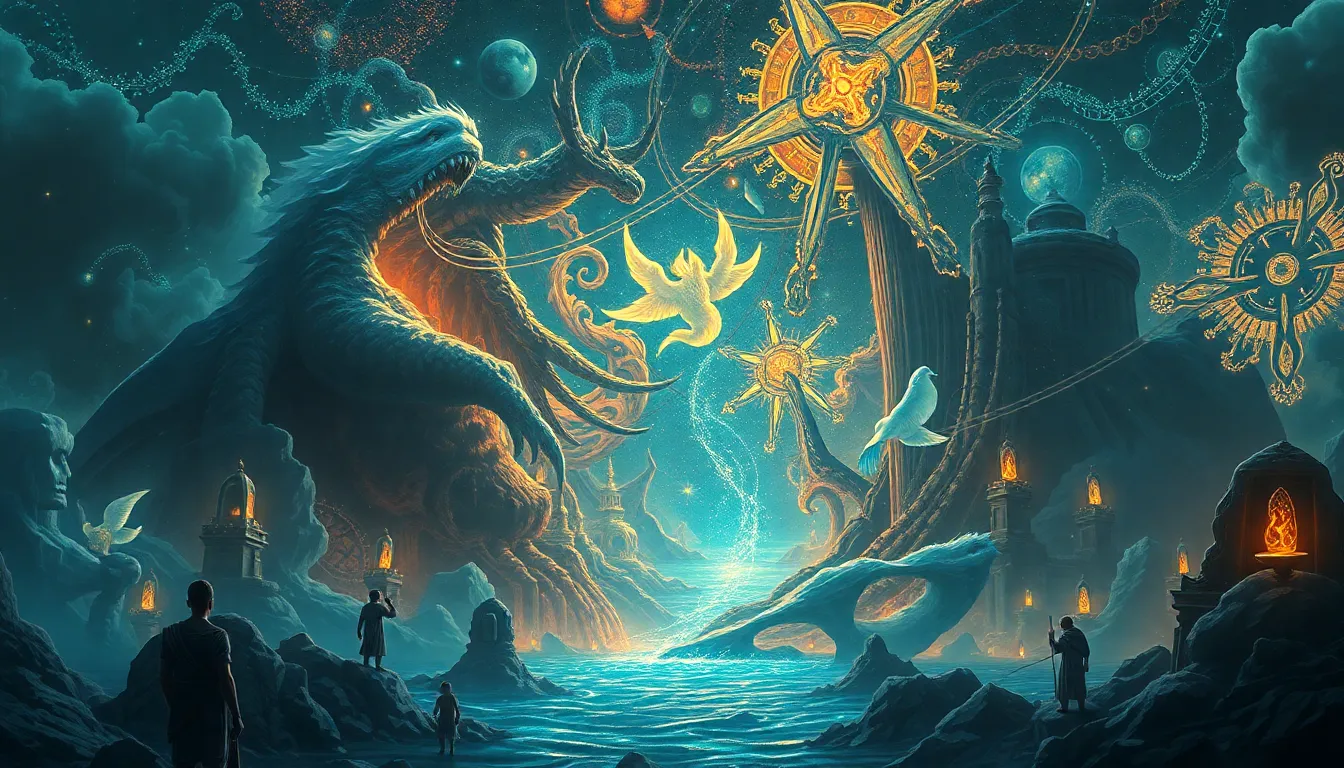From Heaven to Earth: Analyzing Garuda’s Transformation in Buddhist Mythology
I. Introduction
Garuda, a prominent figure in both Hindu and Buddhist mythology, is often depicted as a large, eagle-like creature. In Buddhist tradition, Garuda embodies the complexities of wisdom, enlightenment, and the duality of existence. His transformation from a celestial being to a more earthly presence reflects significant cultural and religious narratives that shape the interpretation of his character. This article aims to analyze Garuda’s transformation within the context of Buddhist mythology and its broader implications.
II. Origins of Garuda in Ancient Texts
Garuda’s origins can be traced back to Hindu mythology, where he is known as the vehicle of Lord Vishnu. He is described as a fierce and powerful being, capable of flying at incredible speeds and possessing immense strength. The Mahabharata and Ramayana are key texts that feature Garuda, establishing his significance in the pantheon of Hindu deities.
As Buddhism emerged, Garuda transitioned into Buddhist narratives, where he retained much of his original characteristics but was reinterpreted within a new religious framework. Important Buddhist texts, such as the Garuda Purana and various Jataka tales, illustrate his role as a protector and a symbol of enlightenment.
III. Symbolism of Garuda in Buddhism
In Buddhist symbolism, Garuda represents various concepts:
- Wisdom and Enlightenment: Garuda is often associated with the pursuit of knowledge and spiritual awakening.
- Protector and Guardian: He serves as a guardian figure, protecting the teachings of Buddha and those who follow the path of dharma.
- Fierce Warrior and Compassionate Being: Garuda embodies duality; while he is a fierce warrior against evil, he also displays compassion towards all beings.
IV. The Iconography of Garuda
Garuda’s artistic representations are rich and varied, reflecting his multifaceted nature in Buddhist art. Common elements in the iconography of Garuda include:
- Wings: Often depicted with large, powerful wings, symbolizing his ability to transcend earthly limitations.
- Beak: His beak is sharp and fierce, representing his role as a warrior against ignorance.
- Posture: Garuda is frequently shown in dynamic poses, suggesting motion and strength.
Regional variations also exist, particularly across different Buddhist cultures, where local artistic styles influence Garuda’s depiction. In Tibetan Buddhism, for instance, Garuda may appear with additional symbolic elements reflecting local beliefs.
V. Garuda’s Transformation: From Myth to Reality
The narrative of Garuda’s fall from grace is a significant aspect of his transformation. Originally a celestial being, Garuda’s journey to an earthly presence mirrors the spiritual journey of sentient beings in Buddhism. His transformation carries profound implications for Buddhist teachings, emphasizing the idea of impermanence and the potential for change.
This transformation can be analyzed through the following lenses:
- Mythological Context: Garuda’s descent illustrates the transition from divine to mortal, reflecting the belief that even celestial beings are subject to the laws of karma.
- Spiritual Symbolism: His journey signifies the path of enlightenment, where the individual must confront challenges and evolve.
- Teaching Tool: Garuda serves as a reminder of the transformative power of wisdom and the importance of compassion in overcoming adversity.
VI. The Role of Garuda in Buddhist Rituals and Practices
Garuda holds an important place in various Buddhist rituals and practices. He is often invoked in ceremonies aimed at protection and purification. His presence is significant in the following contexts:
- Rituals and Ceremonies: Garuda is invoked during rituals to dispel negativity and provide protection to practitioners.
- Meditation Practices: Meditators may visualize Garuda to enhance their focus on wisdom and enlightenment, using his image as a symbol of strength and clarity.
- Contemporary Communities: In modern Buddhist communities, Garuda continues to be a figure of reverence, embodying the values of protection and wisdom.
VII. Comparative Analysis: Garuda in Different Buddhist Traditions
Garuda’s role varies significantly across different Buddhist traditions, particularly between Theravada and Mahayana Buddhism:
- Theravada Buddhism: In this tradition, Garuda is often viewed primarily as a protector, with less emphasis on his mythological origins.
- Mahayana Buddhism: Here, Garuda’s character is more developed, incorporating aspects of compassion and enlightenment.
Local cultures also influence the perception of Garuda. For example, in Tibetan Buddhism, Garuda is associated with specific deities and practices that reflect the unique spiritual landscape of the region, while in Southeast Asian Buddhism, he is often depicted in folklore and local legends.
VIII. Conclusion
Garuda’s transformation from a celestial being to an earthly presence is a compelling narrative that reflects broader themes within Buddhist thought. His evolution serves as a symbol of the journey towards enlightenment, illustrating the interplay between wisdom, compassion, and the challenges faced on the spiritual path.
The enduring legacy of Garuda in Buddhist mythology underscores the importance of mythological transformations in understanding cultural identity and religious practice. As practitioners and scholars continue to explore Garuda’s significance, his story remains a vital part of the rich tapestry of Buddhist traditions, reminding us of the profound connections between mythology, spirituality, and cultural expression.




